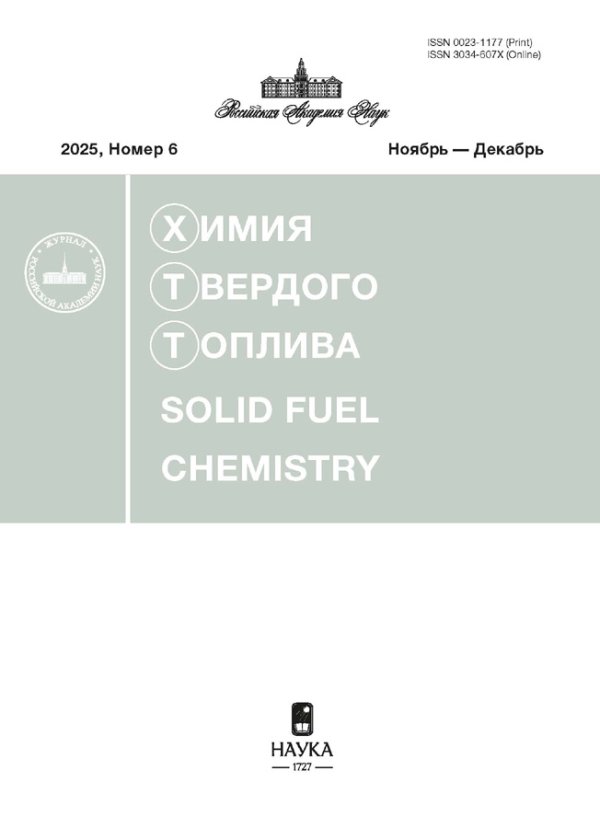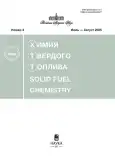№ 4 (2025)
Статьи
Эволюция технологических процессов производства высших жирных спиртов из природного и нефтехимического сырья: история и перспективы (обзор)
Аннотация
Для насыщения рынка дешевыми детергентами начиная с 30-х годов ХХ века был разработан ряд технологических процессов, которые применяются и сегодня, спустя почти столетие. Если в начале пути в качестве сырья для производства мыла применялись различные фракции гидрогенизированных растительных масел и спермацет китообразных млекопитающих, то с середины XX века, во многом благодаря усилиям научного сообщества, развитию химических технологий и органического синтеза, было положено начало использованию нефтехимического сырья. К настоящему времени в промышленность внедрен или близок к внедрению целый ряд методов: гидрогенизация, метод Буво–Блана, метод Башкирова, SHOP-процесс и процесс Циглера, а также технологии биосинтеза ВЖС из газохимического сырья. Данная работа призвана обобщить накопленный опыт науки и промышленности, рассмотреть существующие методологические подходы к синтезу ВЖС из различного сырья, показать преимущества и недостатки этих подходов, а также наметить перспективы использования ВЖС и побочных продуктов их синтеза на территории России.
Химия твердого топлива. 2025;(4):3-21
 3-21
3-21


Влияние микроволнового облучения на адсорбционный процесс 2,4-дихлорфеноксиуксуной кислоты микропористым активированным углем
Аннотация
Проведена оценка эффективности процесса микроволнового облучения микропористого образца активированного угля из скорлупы кокосового ореха с использованием физико-химических методов. После каждого цикла “адсорбция–микроволновое облучение” определены параметры пористой структуры адсорбента и адсорбционные характеристики относительно исходного образца. Показано, что метод микроволнового облучения непригоден для микропористых образцов активированных углей из скорлупы кокосового ореха при адсорбции на них гербицида 2,4-дихлорфеноксиуксусной кислоты.
Химия твердого топлива. 2025;(4):22-28
 22-28
22-28


Связь структурно-группового состава и биологической активности гуминовых веществ из неокисленных и окисленных углей разной стадии углефикации
Аннотация
Представлены результаты исследования неокисленных и естественно окисленных (выветрелых) бурых и каменных углей раннего диагенеза, а также полученных из них гуминовых (ГК) и фульвокислот (ФК). Методом 13С ЯМР (CP/MAS)-спектроскопии установлено, что структурно-групповой состав выделенных ГК определяется составом исходных углей (R2 = 0.81) и влияет на величину биологической активности на примере семян пшеницы (R2 = 0.75). Структурно-групповой состав выделенных ФК слабо связан с составом исходных углей и более однороден. Высокий количественный выход и биологическая активность ГК и ФК из неокисленных и окисленных бурых углей позволяет рекомендовать их для сельского хозяйства. ГК и ФК из окисленных каменных углей обладают низкой биологической активностью и могут быть рассмотрены в качестве технических реагентов.
Химия твердого топлива. 2025;(4):29-39
 29-39
29-39


ВЫДЕЛЕНИЕ ФУЛЬВОКИСЛОТ ЭКСТРАКЦИЕЙ н-БУТАНОЛОМ
Аннотация
Рассмотрены способы выделения фульвокислот из бурых углей методом Тюрина–Форсита и методом жидкофазной экстракции н-бутиловым спиртом. Представлены данные технического и элементного анализа, ИК-, 13C ЯМР-полученных образцов фульвокислот и их фракций. Проведена сравнительная характеристика полученных ФК. Установлено, что фракции фульвокислот, полученных по методу Тюрина–Форсита обладают большим показателем ароматичности (far = 32.79–61.54%), чем ФК, полученные жидкофазной экстракцией н-бутиловым спиртом (far = 20.64%). Сделаны выводы о возможности и эффективности применения метода жидкофазной экстракции н-бутиловым спиртом для извлечения буроугольных фульвокислот.
Химия твердого топлива. 2025;(4):40-47
 40-47
40-47


Влияние влаги на характеристики совместного сжигания смеси целлюлозно-бумажного осадка сточных вод и коммунальных отходов
Аннотация
Проанализированы особенности сжигания влажной смеси осадка сточных вод целлюлозно-бумажного комбината и коммунальных отходов. Собранный осадок был сначала высушен естественным путем до влажности 5–9%. Далее к высушенным естественным путем образцам добавляли чистую воду в массовом соотношении от 30 до 60% для анализа их характеристик при сжигании. Были проведены термогравиметрические эксперименты с высушенными и увлажненными образцами в воздушной среде при скорости нагрева от 5 до 100°C/мин. Проведено сравнение термогравиметрических профилей увлажненных образцов. Выбросы CO, CO2 и общего количества углеводородов были измерены в ходе дальнейших экспериментов по сжиганию, проведенных при изотермических температурах 600, 700, 800 и 900°C.
Химия твердого топлива. 2025;(4):48-56
 48-56
48-56


Зависимость смачиваемости поверхности и фильтрационной способности углей от степени метаморфизма
Аннотация
Для многих технологических процессов добычи, сортировки, обогащения и транспортировки угля важным является свойство угольной поверхности смачиваться различными жидкостями. В качестве характеристики смачиваемости в работе использовали метод определения краевого угла смачивания угольной поверхности и фильтрацию жидкости через слой угольного порошка. Дана оценка влияния изменения химического состава и пористости углей в ряду их метаморфизма на характеристики смачиваемости. Показано, что смачиваемость и фильтрационные свойства углей имеют экстремальную зависимость с минимумом на средней стадии метаморфизма.
Химия твердого топлива. 2025;(4):57-63
 57-63
57-63


Адсорбция 3,5,6-трихлор‑4-аминопикриновой кислоты на сибуните в водной среде
Аннотация
Изучена кинетика адсорбции 3,5,6-трихлор-4-аминопикриновой кислоты (пиклорам) на мезопористом активированном угле сибунит. Масса адсорбента для эффективного извлечения пиклорама из водного раствора определялась при проведении адсорбции с разным отношением массы адсорбента к объему раствора адсорбата различной концентрации. Установлено, что для эффективного проведения адсорбции важным параметром является также и время.
Химия твердого топлива. 2025;(4):64-69
 64-69
64-69










